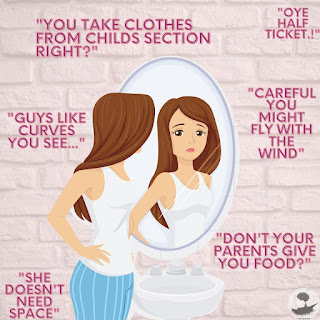Hair
Kesh ki Kahani
"Ye jo toot ke gira hai,
Ye zameen pe mera dil pada hai,
Inhe baal mat kehna…
Jo ye aankhon ke aage hai,
Ye to pyar ke dhaage hai,
Jise hairband se bandha hai,
Wo ek pakka irada hai,
Aur ye jo khule khule hai,
Ye to pankh phaile hai,
Ye baal nahi hai,
Ek uljha hua rishta hai,
Jise suljhati hu,
Ek bikhra hua din,
Jise sawarti hu…
Zimmedaari, ek iss kandhe pe, ek uss kandhe pe,
Socho, kyu ye itne ghane hai?
Kya ye dher sari khushi se bane hai?
Mein inn pe haath pherati hu,
To khud ko kya batati hu?
Aur ye jo wapas ugg rahe hai,
Kya ye sapne hai, jo jag rahe hai?
Inhe baal mat kehna, inpe mera naam likha hai,
Ye baal nahi hai, ye mein hu…"
-Mere
Baal Meri Jaan Hai, Parachute Advansed Oil
This recent campaign by the hair oil brand
resonated with a lot of viewers, because it emphasized hair, but celebrated the
simple subtle beauty and strength of women by exploring the variety and
similarity of the hair of Indian women. It accepts that all women have
different types of hair but the care we put into managing it, makes us all the
same.
In India, hair plays an important role as a social as well as a cultural determinant. As a social determinant, it determines how society perceives a woman. Someone with long, plaited hair must be a "mannered" individual whereas a person with short hair is quite often connected with a modern world, quite often with negative connotations. The hair is thus, albeit unintentionally, playing a strong role in determining one's position in society based on perceived assumptions. This is further complicated by the notion that one's honor resides in the hair, and thus opening the hair, cutting it, or pulling it, may be considered as intended disrespect. This is effectively portrayed in the Mahabharata, during Draupadi's dishonor, when she was dragged into the Kuru court by her hair. This insult is avenged during the Kurukshetra war when Bhima washes Draupadi's hair using Dushasana's blood, signifying that her honor has been restored.
At the very same time, if a woman does not
have hair or does not want to keep very long hair, society views her from a
skeptical point of view and is extremely distrustful of her. Society quite
often fails to factor in the point that there may be a reason why the person is
unable to sustain their hair. Even if there is no adequate reason to be found,
society must accept that an individual's choice is equally important.
Individuals can adequately determine whether they wish to have long hair or
short hair, even if they wish to have it. Colored hair is not a good enough
reason for someone to perceive who I am and make credible judgments about my
qualities, beliefs, and skills, but is rather reflective of the individual's
incapability and ignorance.
I would like to conclude by stating that if
the hair is the crown of a queen, her smile and her words hold the power to
bring about change and are thus powerful tools in her kit.
“In kesho ka kya kehna, ye to sar ka taaj hai,
In kaali julfo ki lat,mujhe karati naaz hai,
aayena kahta mujhse,bas tera hi raaz hai.”
(By Anupriya Bhatnagar, High
Flyer, Editorial Department, Adolescence Development Club)


Comments
Post a Comment